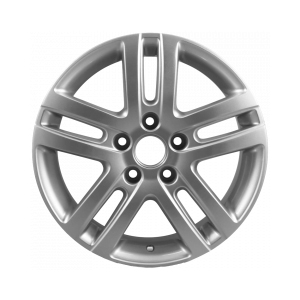mechanical oil seal types
Understanding Mechanical Oil Seal Types A Comprehensive Overview
Mechanical oil seals play a crucial role in various machinery and systems by preventing the leakage of fluids while allowing rotating shafts to move efficiently. These seals are essential in automotive, aerospace, and industrial applications and are designed to withstand diverse operating conditions, including extreme temperatures, pressures, and environmental factors. In this article, we will explore the different types of mechanical oil seals, their construction, applications, and the factors to consider when selecting the right seal for your needs.
What is a Mechanical Oil Seal?
A mechanical oil seal, also known as a rotary shaft seal, is a device that seals the gap between a rotating shaft and its static housing. It comprises several components, including the sealing element, the spring, and sometimes a garter spring, which work together to ensure a tight seal around the shaft. The primary function of an oil seal is to prevent the escape of lubricating fluids while also keeping contaminants like dirt and water from entering the machinery.
Types of Mechanical Oil Seals
1. Lip Seals
Lip seals are among the most common types of mechanical oil seals. They consist of a flexible lip that forms a tight seal against the rotating shaft. The lip is usually made of rubber or elastomeric materials, providing excellent flexibility and resilience. Lip seals are effective for low to moderate pressures and are widely used in automotive applications, such as in engines and transmissions.
2. U-Cup Seals
U-cup seals, also known as U-seals, feature a U-shaped cross-section. They are commonly used in hydraulic and pneumatic applications due to their ability to handle pressure and maintain a reliable seal. The design helps to provide an excellent sealing surface against the shaft, especially in dynamic applications. U-cup seals can be made from various materials, including rubber and polyurethane.
3. O-Ring Seals
O-rings are circular seals made from elastomers, commonly used in static and dynamic applications. While they are not exclusively designed for rotary applications, O-rings are often integrated into larger sealing systems. Their simplicity, cost-effectiveness, and ease of installation make them a popular choice in many industries. However, they may not perform well under high-speed rotary motion unless properly designed and applied.
mechanical oil seal types

Unlike traditional oil seals, mechanical seals are used mainly in pumps and rotating equipment to prevent fluid leakage. They consist of two flat surfaces that make contact with each other, creating a seal. Mechanical seals are usually employed in high-speed applications and can handle high-pressure environments, making them ideal for water, oil, and chemical services. They are more complex than other seal types and often require careful installation.
5. Radial Oil Seals
Radial oil seals are specifically designed to retain lubricants and fluids while preventing contamination. These seals typically feature a metal casing along with an elastomeric sealing lip. Radial seals are employed in various applications, from automotive engines to industrial machinery, where they provide reliable sealing performance under varying load conditions.
Choosing the Right Mechanical Oil Seal
When selecting a mechanical oil seal, it is essential to consider several factors to ensure optimal performance and longevity
- Operating Conditions Evaluate the temperature, pressure, and type of fluid the seal will be exposed to. Different materials and designs are suitable for specific environments.
- Shaft Tolerance Understand the diameter and tolerance of the shaft to ensure a proper fit. An improper fit can lead to premature seal failure.
- Speed Consider the rotational speed at which the seal will operate. Some seals, like lip seals, may not perform well at high speeds.
- Chemical Compatibility Ensure that the seal material is compatible with the fluids it will be in contact with to prevent degradation.
Conclusion
Mechanical oil seals are indispensable components in many mechanical systems, playing a vital role in maintaining the efficient operation of machinery. By understanding the various types of oil seals and their specific applications, you can make informed decisions when selecting seals for your projects. Whether you’re dealing with lip seals, U-cups, O-rings, mechanical seals, or radial oil seals, always consider the unique demands of your application to ensure optimal sealing performance and longevity. Proper selection and maintenance of mechanical oil seals can significantly reduce the risk of leaks and device failures, contributing to the overall efficiency and reliability of machinery.
-
Understanding Automotive Oil Seals: Essential Components for Engine and Shaft Protection
News Jul.30,2025
-
The Importance of Heavy Duty Seals in Industrial and Residential Applications
News Jul.30,2025
-
Exploring Industrial Oil Seals: From Felt Oil Seals to TTO and CFW Solutions
News Jul.30,2025
-
Essential Guide to Oil Seals: From Radial to Metal-Cased Seals for Industrial Reliability
News Jul.30,2025
-
Choosing the Right Oil Seals and Gaskets for Industrial and Automotive Applications
News Jul.30,2025
-
Cassette Seals: Durable Sealing Solutions for Harsh Environments
News Jul.30,2025
-
Understanding the Front Main Engine Seal: Purpose, Maintenance, and Installation
News Jul.29,2025
Products categories















